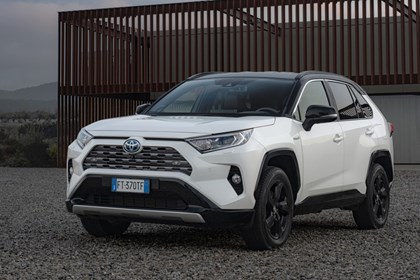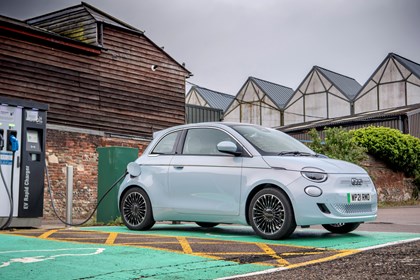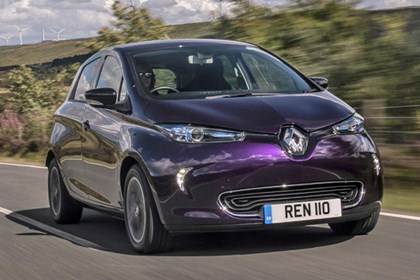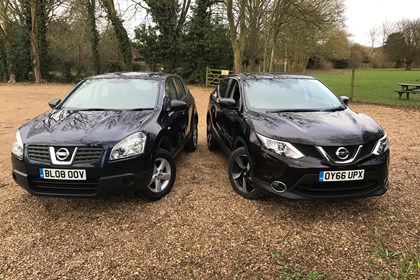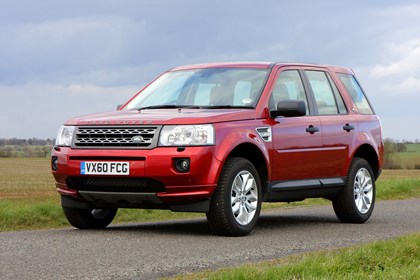2014 Suzuki V Strom 650 Abs Adventure
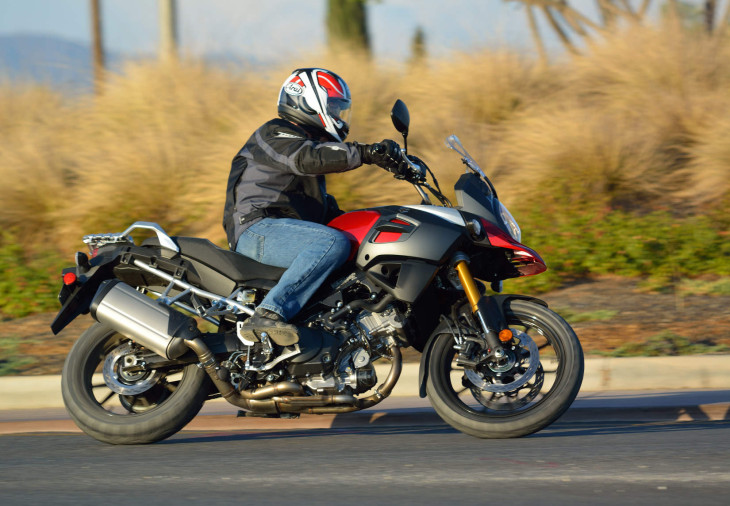
You can call it 'common wisdom,' 'group think,' 'Zeitgeist' or maybe even 'mob mentality,' but as a product ages, the general narrative about it solidifies into a widely held belief. When it comes to V-Stroms, the narrative went, the 1000 is a pretty good bike, but the 650 is so much lighter and fun to ride it more than makes up for the horsepower deficit, so just get the 650. That's probably why the 650 outsold the 1000 two-to-one in the USA, but after 600 miles on the revamped 2014 V-Strom 1000, I think that's going to change.
The old 1000 model, first introduced in 2002, was, well, old. I will refrain from describing the dimensions of its teeth, as we have done that in great detail in other stories…oh Lord, I can't help myself. It was long in the tooth. Our man Willy Ivans did a great job describing the changes made to the new bike, so please read or reread his outstanding first-ride story. The nutshell version of it, in case you can't be bothered to click on the link, is that Suzuki really pulled out the stops to re-do this bike—it's not just pretty new bodywork or new instruments. It's much lighter (503 pounds gassed up), more fuel efficient, more responsive, better handling, better suspended…there are about 100 reasons why this is a better bike than the old one, which (at the risk of offending my many V-Strom 1000-mounted friends) was kind of a pig, if you want my honest opinion (you probably don't).
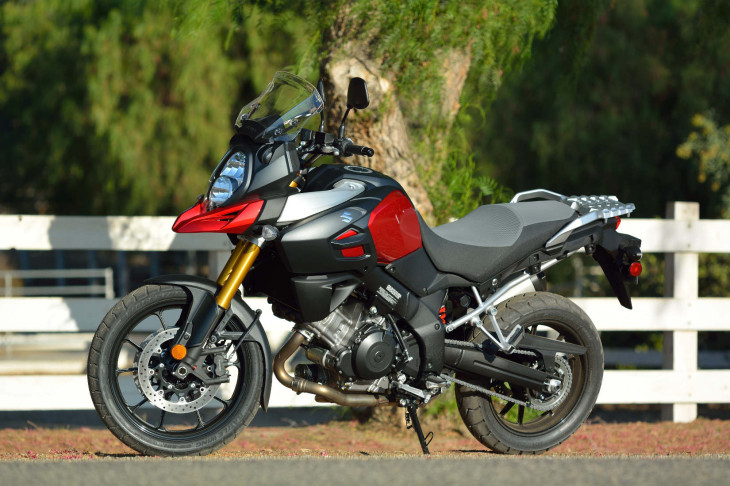
Suzuki's enthusiastic media rep, Frankie Garcia, was excited for me to ride it—"Dude, it's like a big supermoto." I've heard that one before, and c'mon Frankie: how much fun can a 500-pound bike be? I was expecting your standard Japanese Adventure-Tourer like the old V-Strom, or the Versys, or Yamaha's very good Super Tenere: big and heavy, but solid, reliable and comfortable for long trips. In fact, I rode a Super Tenere test unit down to SoCal so I could ride the V-Strom home to NorCal, and I enjoyed it—big, fast, heavy and very comfortable, if not the most exciting or best-handling steed I've ever swung a leg over.
"Oh, I think you'll really like it," said Editor Edge in his usual low-key manner as I prepared myself for the 500-mile ride home. How much I liked it surprised me.
Frankie wasn't exaggerating—too much—when he called it a SuMo. It feels light—lighter than any open-class ADV I've ridden, even more than the KTM 1190 Adventure, thanks to a almost-manageable 33.4-inch seat height and a lot of good engineering from the Suzuki folks. It's also slim at the waist, with minimal bodywork; as a motorcycle intended for adventure should be. The bars are wide, but didn't have that crazy beach-cruiser feel some big bikes have. I'd even guess it feels smaller than the 650, but I haven't ridden the current-gen, so I can't be sure.
The motor hasn't really gained much power, just a few hp and foot-pounds, but it feels smoother, faster and freer-revving. I also noted really great fuel economy for a jumbo V-Twin—an all-day ride at 80-plus mph still saw numbers in the 40s, and riders in states with actual speeding enforcement (note to CHP: I am not complaining. You guys are doing a great job.) could probably bump into the 50s. Folks on Fuelly report high 30s and low 40s with their old V-Stroms, but the one I rode most recently didn't do as well—mid to high 30s. With the new bike's claimed 5.3-gallon tank (I never could get more than about 4.5 gallons in it) you just barely go 200 miles at reasonable interstate speeds—the minimum range for an adventure bike, don't you think?
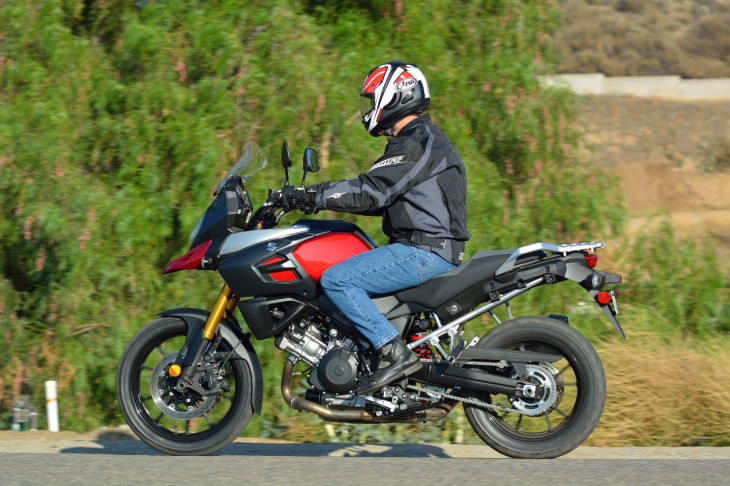
Other notes about a wind-blasted, all-day drone: the seat is not as nice as the Super Ten's, and wind protection is lacking as well. The screen is small and there's annoying buffeting unless the screen is in the lowest position. It's a minimal tourer, see? Get off the interstate, says the V-Strom 1000, but if you have to do it (and sometimes, you have to do it), it's not the worst choice out there—legroom and arm position are great, though I missed the Super Ten's cruise control. Around town, the Strom is nimble and easy to manage, but for a rider of my stature the high seat gets old, especially if you're getting on and off frequently.
Running errands or blasting along in a straight line is okay, but this chick likes to party. As with the Burgman 200, somebody let the GSXR engineers into the development meetings, because this 1000 has some of the best stock suspension I can remember, on par with supersports. Good suspension, excellent steering geometry, wide bars and the seemingly magical weight reduction make the big V a real joy to take on a bumpy, twisty mountain road. Your friends on sportbikes will hate you, but you'll feel safer and more in control, so just get new friends.
It's ironic Willy noted the KYB forks and shock are 3-way adjustable, because I didn't need to make any adjustments. It felt composed, controlled, firm and plush all at the same time, without the annoying hobby-horse feel some long-travel motorcycles have.
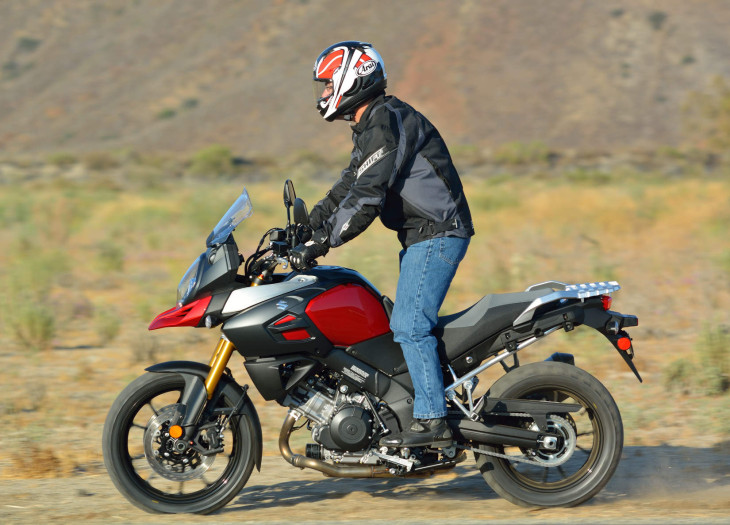
The monoblock brakes were very good, though not as good as something KTM or Ducati might use—powerful enough, but not the best feel, and the ABS wasn't what I'd call transparent. Suzuki is proud to point out the V has traction control—the first on a Suzuki, according to its website, but I just left it on position two and forgot about it. Acceleration is brisk, but it's a quarter-ton of bike and I only saw the yellow TC indicator lamp a couple of times—but was glad to have it when I did. I also appreciated the logically laid-out controls, the informative data display and the 12-volt outlet rationally located where riders will plug in accessories (some OEMs put the sockets under the seat, as if you don't need to look at your phone while you're riding—do they think we're animals?).
It's one of the cheapest open-class ADVs at $12,699 (with standard ABS), as well as the lightest. It's fuel efficient, comfortable enough, handles great, has the safety features you need, is really fun to ride and should prove as durable as your grandfather's golf shoes. First-gen V-Strom riders rack up miles like cabbies, and I expect this iteration to match this, as it shares the same basic architecture. I was surprised at how well the new V-Strom 1000 works—is it worth the $4,150 premium over the 650? I'm not sure, but I think you'll see a lot more 1000s out on the roads.
For additional details and specifications, as well as available colors, visit Suzuki's web site. Suzuki also sells an Adventure Model for $13,999. The Adventure Model comes standard with the following accessories: Under Cowl, Hand Guards, Touring Windscreen, Side Cases and Mounting Brackets, and Accessories Bars.
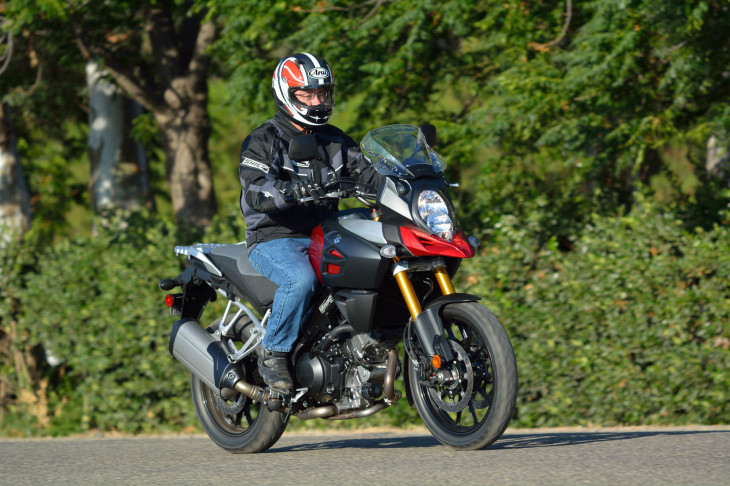
You can follow any responses to this entry through the RSS 2.0 feed. Both comments and pings are currently closed.
2014 Suzuki V Strom 650 Abs Adventure
Source: https://www.motorcycledaily.com/2014/08/2014-suzuki-v-strom-1000-abs-md-long-term-ride-review/


